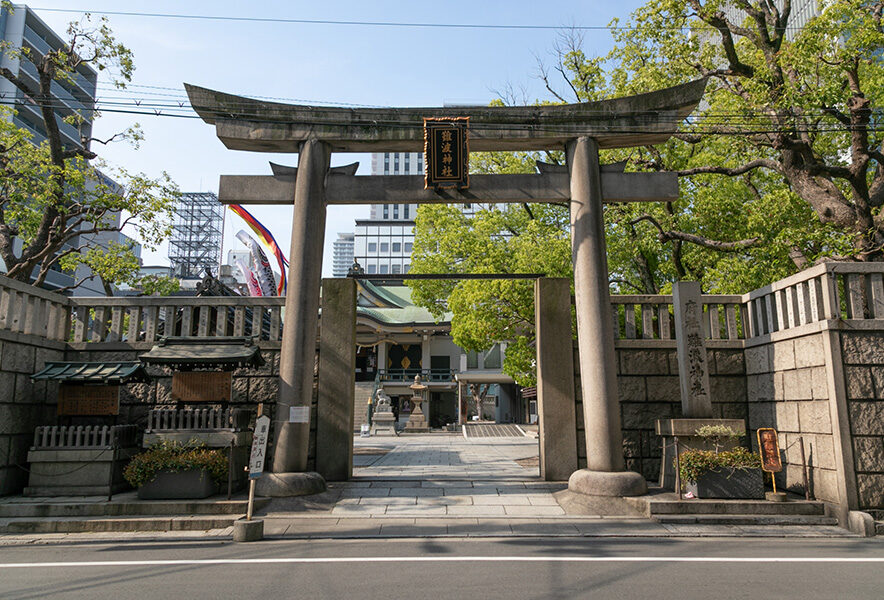Nambajinja Shrine even though it is not in Namba
Nambajinja Shrine is surrounded by buildings facing Midosuji Avenue.
The main deity is “Emperor Nintoku,” and the shrine was built in 943 (Tenkei 6) in memory of his father emperor when Emperor Antisho opened Shibagakinomiya in Matsubara City, Osaka Prefecture, making it the first shrine to worship Emperor Nintoku.
Later, it was moved to Uehonmachi and then to its current location in 1583 after Lord Toyotomi Hideyoshi built Osaka Castle.
In 1945, the shrine was burned down in an air raid on Osaka during World War II and was a temporary shrine, but was rebuilt in 1974.
In the past, the name of the place was Kami-Nanba-so, and today’s Namba was called Shimo-Nanba-so.
The shrine territory was donated by Prince Minamoto no Yoritomo, and the Emperor Nintoku and Inari were enshrined in Kami-Namba, and Susanoo-no-Mikoto was enshrined in Shimo-Namba.
It was called “Namba Grand Palace.”
There was a time when it was called Kami-Namba Shrine, but it came to be called Namba jinja Shrine because it enshrined the main deity, Emperor Nintoku, and was the center of Namba.
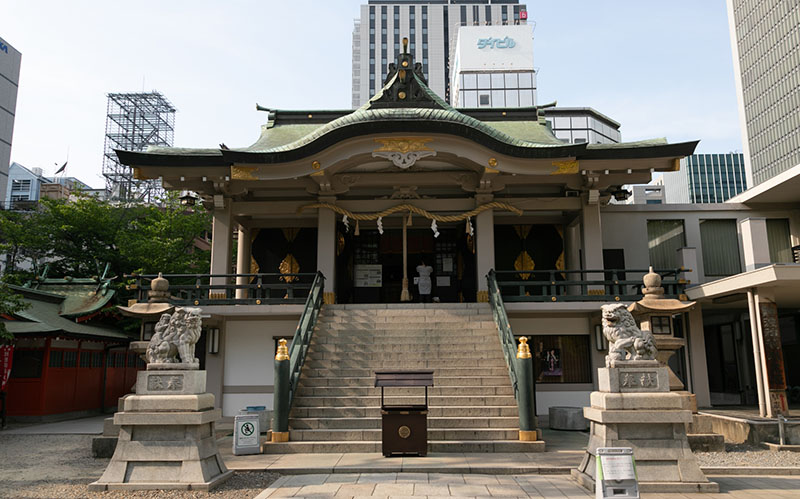
Nambajinja Shrine this and that
Inari jinja Shrine” in the precincts of the temple to increase your financial fortune.
Inari worship was very popular in this merchant town, and during the Edo period (1603-1867) the Inari Shrine was more famous than the main shrine, and was popularly known as “Bakuro-machi no Inari-san” .
Himuro Matsuri, a rare festival in which ice is offered
Prince Nukata Ohonakatsuhiko, the elder brother of Emperor Nintoku, went hunting in Tsugeno, Nara, and found an ice chamber where ice could be stored until summer by digging holes in the ground and stacking ice between grass and other materials. The prince decided to offer the ice to the emperor. The emperor was so pleased that he had 10 ice chambers built.
This is the reason why the summer festival “Himuro Matsuri” is held on July 20 and 21 every year. It is said that if you eat the cracked ice from the dedicated icicles, you will not be defeated by the summer heat. It is said that if you eat the cracked ice from the dedicated icicles, you will not lose the summer heat.
Roots of Bunrakuza’s name? Shrine said to be
The name “Bunrakuza Ningyo Joruri Bunrakuza” has its roots in Inarisha Bunrakuza, which was started by Uemura Bunrakuken in Bunka 8 (1811).
It moved to Matsushima, Nishi-ku, in the 4th year of Meiji (1871). Later, the anti-Bunrakuken faction moved the “Inari Hikorokuza” to the precincts of the temple.
Red seal with the crest of the god
It is said that an old woman offered irises growing in Horie every year on Dragon Boat Festival, and that the iris became the sacred crest of the shrine.
Iris used to grow in the Horie area, which is now a popular spot known as the Horie neighborhood.
When you receive a red seal, a seal decorated with a bright purple iris flower is stamped with it.
It looks gorgeous, and I guess it is the best of all.
Komainu might be a little unusual.
The guardian dogs here may be good at playing kemari.
There is a ball at his feet, and he looks like he is about to start kicking it. They might be good at soccer, too.
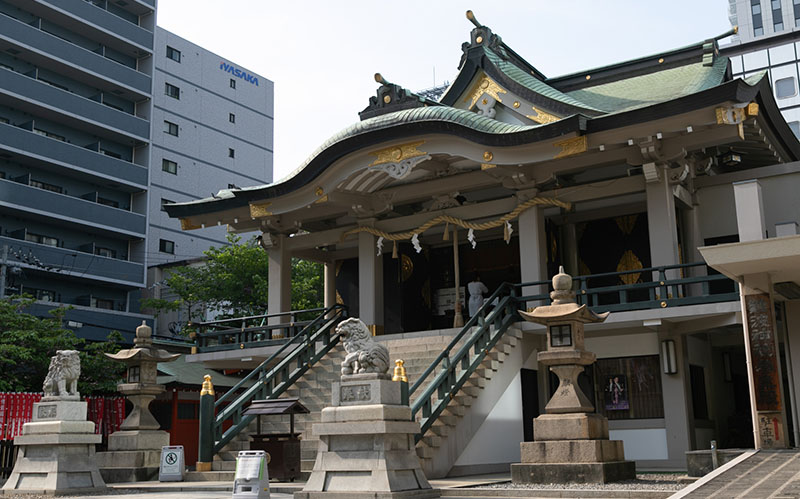
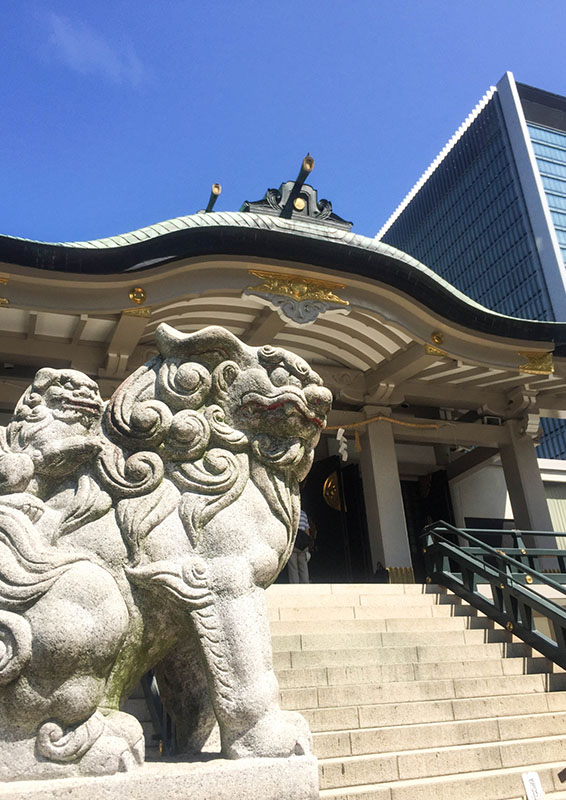
Wandering around the town of Nambajinja Shrine
Strolling with a side view of Midosuji, a six-lane one-way street
There are “suji” and “dori” in Osaka City.
The road running north-south is called “XX-suji,” and Midosuji is a typical example. It is a one-way street with six lanes, including side roads, and I think it is rare to have a one-way street with six lanes.
In winter, the illumination is beautiful. The road running east-west is called “XX Street.
If anything, “suji” seems to be wider than “dori”.
Stroll along Shinsaibashisuji shopping street from Honmachi to Shinsaibashi
The Shinsaibashisuji shopping street runs parallel to Midosuji Avenue.
There are a wide variety of stores, ranging from surprisingly inexpensive clothing and accessories to long-established stores, perhaps due to its proximity to Hommachi.
Shinsaibashisuji Shopping Street and Ebisubashisuji Shopping Street can take you to Namba.
There are also retro coffee shops and places to eat, so why not take a leisurely stroll? You may find a bargain.
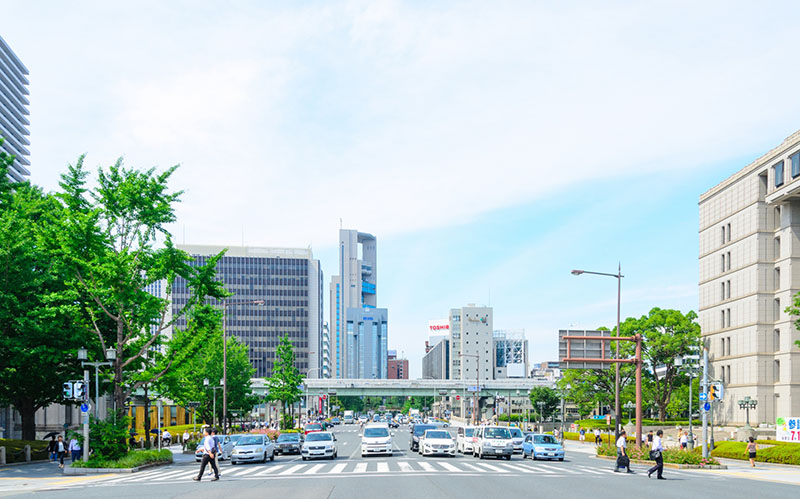
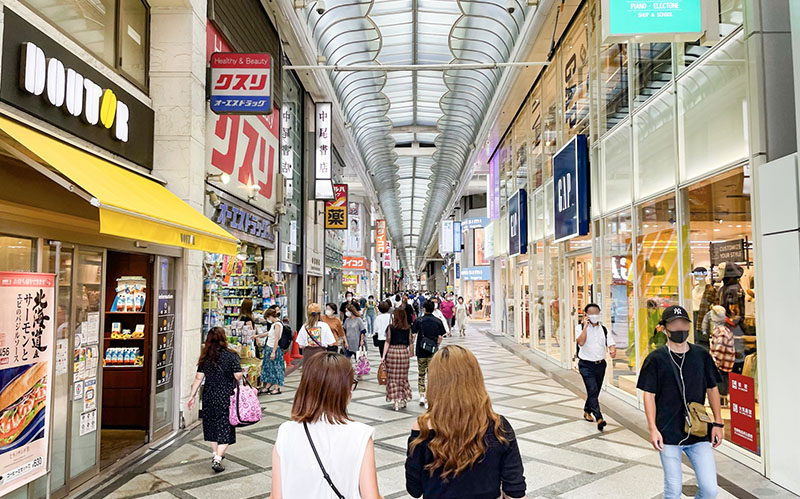
Access to Nambajinja Shrine
4-1-3 Hakuromachi, Chuo-ku, Osaka-shi, Osaka 541-0059
Parking around Nambajinja Shrine
Nambajinja Shrine Official Website
Official site:http://www.nanba-jinja.or.jp/
